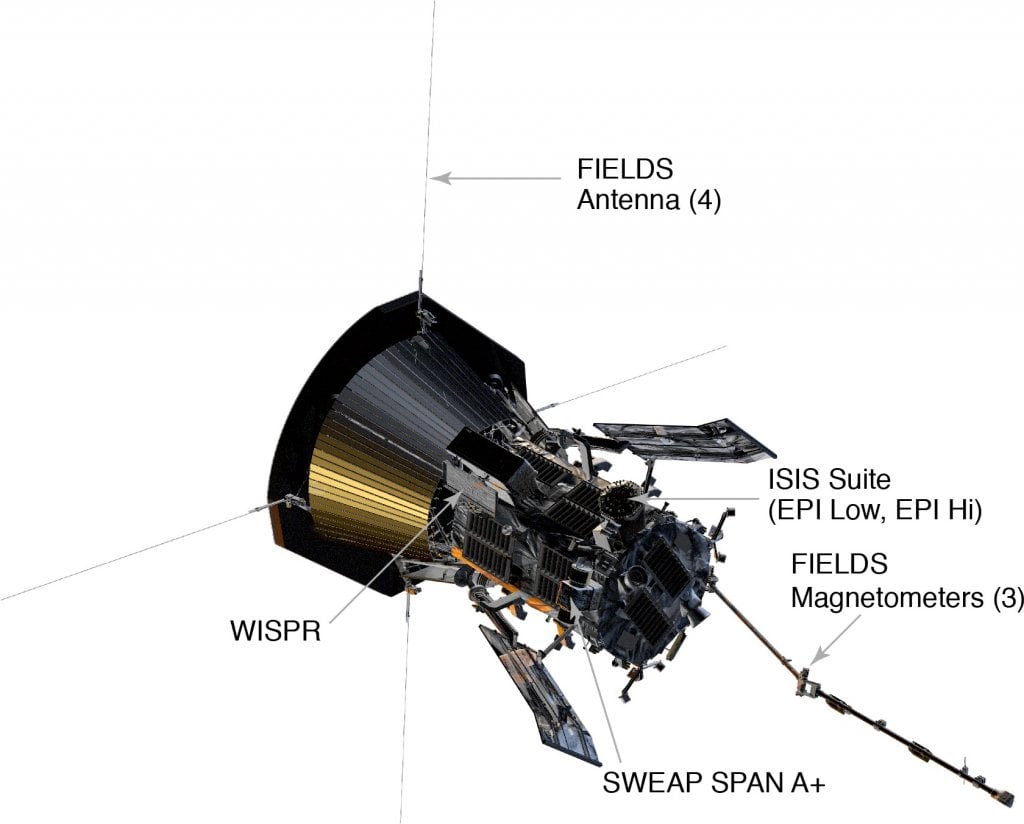Sometimes in space, even when you're millions of kilometers from anything, you're still being watched. Or at least that's the case for the Parker Solar Probe, which completed the 11th perihelion of its 24 perihelion journey on February 25th. While the probe was speeding past the Sun, it was being watched by over 40 space and ground-based telescopes.
None of those telescopes were able to see Parker itself. Even though the probe is the size of a bus, the Sun's light itself would completely wash it out from any further out observational platforms. Those platforms that were taking a look were simply monitoring the solar environment while the probe made its closest approach. This type of multidisciplinary observational campaign is becoming more common lately, as we reported last year.
The latest Parker campaign was one of the most well-coordinated of these. It involved forty telescopes, with all manner of sensors and wavelengths of interest. Included in the campaign were the newly commissioned Daniel K. Inouye Solar telescope in Hawai'i, and the Solar Orbiter, a sister solar observer managed by ESA. One craft, in particular, provided a unique vantage point - MAVEN, a Mars orbiter operated by NASA, was roped into the observational campaign as well, allowing scientists to capture data from Mars' perspective.
UT video describing the Parker Solar Probe mission.Some of those same observatories were aimed in the general direction of one of the most exciting events to happen to Parker in its three and a half year history. On February 15th, it was hit by a "large solar prominence" that smacked the spacecraft with charged particles that would have damaged lesser machines.
Parker is designed just for this sort of turbulence, and its sensors were busy collecting data the whole time. The probe has already dealt with plenty of "hyper-velocity dust," as we reported late last year. However, it won't pose a danger to the spacecraft itself - it might just cause some noise in the probe's instruments.
That instrumental noise can be teased out once the probe's handlers have data back in their hands. But for now, that data is still stored mainly on the probe itself, as sending and receiving signals from that close to the Sun is difficult. Parker last checked in a few days after the latest perihelion, but the next data transfer window opens from the end of March until the beginning of May.
Synchronizing the data from all the different observatories will be difficult and is one of the primary reasons more multi-modal research hasn't taken place so far. Parker itself is continually setting new speed records as it hurtles around the largest object in our solar system. Positioning it precisely as it does so is bound to be one of the main challenges for scientists looking to combine data it collected with those from more stationary and further away telescopes.
But with that combination will come insight into the ultraviolet, infrared, radio, and other spectra that Parker itself lacks the instrumentation to study. Those observational capabilities might not always be trained toward the Sun, but solar activity is consistently ramping up, making it more interesting to observe in whatever wavelengths are available. Parker will continue to play a vital role in that effort for the duration of its mission, which is currently planned to end in 2025.
Learn More:
NASA - Telescopes Trained on Parker Solar Probe’s Latest Pass Around the Sun
space.com - When NASA's Parker Solar Probe flew close by the sun, telescopes were watching from Earth and space
SciTechDaily - Powerful Telescopes Trained on Parker Solar Probe’s Latest Swing Around the Sun
Lead Image:
Depiction of Parker's path around the Sun's equator.
Credit - NASA / John Hopkins APL / Steve Gribben / SDO
 Universe Today
Universe Today

